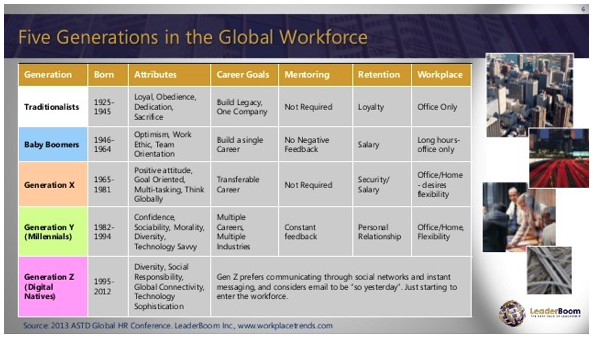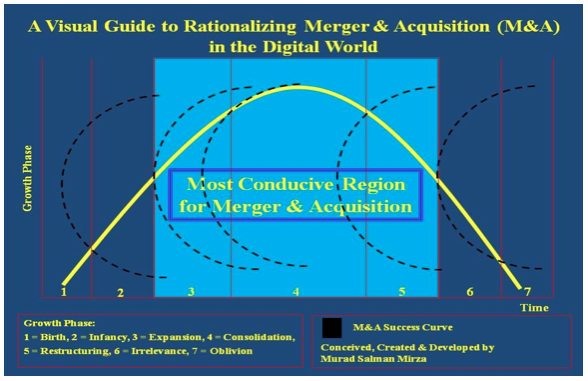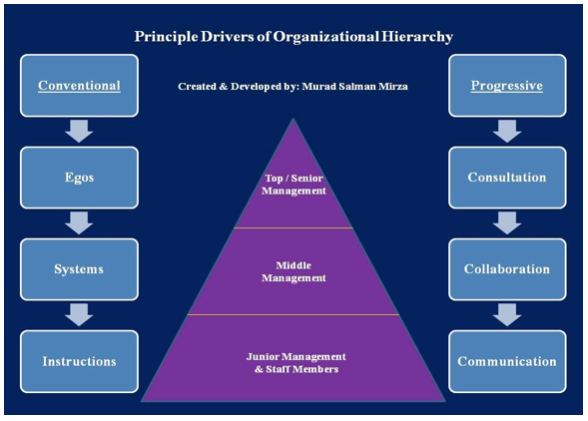The Four Keys to Increasingly Complex Change
By Murad Salman Mirza
The dilemma of harvesting rich rewards while balancing the risks of marginalization/capitulation makes the prospect of change enticing as well as ominous in the inherently agile digital world.
Change is no longer interpreted in terms of being gradual, steady, progressive or linear; rather, the defining terminology revolves around the lexicon of hyper-fast, disruptive, transformative or non-linear. Consequently, the rules that have traditionally tried to encapsulate the phenomenon of change are also going through multiple revisions rapidly as past becomes an increasingly irrelevant predictor of the future.
The following four factors are driving such a profound prospect:
1. The Digital Cycle
There was a time when product cycles could be easily segregated in terms of distinct stages from conception to obsolescence; this enabled top/senior management to strategize on a long-term basis with the benefit of “slack time” that allowed for reflection on honest missteps and resolute course corrections without jeopardizing the organizational integrity.
However, this is no longer the case as the demands and expectations of consumers have significantly changed with the rise of the digitally-driven comforts. Conception is not restricted to a singular idea and has been forced into ecosystem thinking. Obsolescence has also undergone radical interpretation from being “end of useful life” to “end of relevance” in terms of rapidly evolving consumer needs and expectations. All the stages in between the two extremities have also had new interpretations, and the overall time to reach obsolescence has been reduced drastically.
This has also impacted the services sector where online and, particularly, mobile-driven commerce is changing the familiar landscape of several industries. Consequently, managing successful change initiatives has become dauntingly complex due to deeply narrowed product cycles, dazzlingly-fast service parameters, overwhelming information avalanches and excessively-hyped expectations from key stakeholders.
Additionally, the path to sustainable success, formidable competitiveness and continued relevance in a rapidly evolving digital world is paved by “productive Rebels,” rather than, “insular conformists”; as a result, the success of any change initiative is largely dependent upon progressive talent management practices that provide the “breathing space” for free thinkers and trendsetters who are imbued with the “change imperative”—and enrich the “organizational aptitude” in unconventional ways that effectively boost the core value of innovation. Unfortunately, most organizations lack the enterprising spirit to engage in such bold/unpredictable initiatives and prefer the soothing influence of “disciplined” adherence to restrictive/measured policies/procedures/processes that are inherently open to modification, but genetically unable to embrace meaningful change.
2. Multi-generational Workforce
Diversity and inclusion has come a long way from being a marginalized talent management concept to taking its rightful place as the centrepiece of a progressive and modern workforce. Its significance is even more amplified by the richness of employees from various generations; their unique preferences and approaches to work enable the fulfillment of desired corporate goals and objectives.
A general overview can be visualized as follows:

Trying to keep such a diverse workforce committed, motivated and aligned with the organizational imperatives requires deft handling of nagging concerns and proactive engagement with astute talent management methodologies. The respective challenge is even more pronounced in organizations that are geographically dispersed, especially, in multiple regions across the world.
Consequently, gaining buy-in for progressive change initiatives becomes highly challenging. This is further exacerbated by perceived threats to the comfort level in the status quo by negativity-triggering factors, e.g., corrosive organizational politics, prejudiced stereotyping, active grapevine, inter-generational rivalries, increasing encroachment of AI-enabled technology, damaged psychological contracts, lack of confidence in ‘felt-fairness’ aspects of organizational policies/procedures/processes, etc.
Subsequently, passive resistance takes hold within apprehensive sections of the workforce which clouds lucid thinking and rationalizes intrinsic opposition to any initiatives for enabling progressive change initiatives.
3. Disruptive Innovations
The word ‘disruptive’ has come to signify the kind of transformative change that uproots existing norms of competitive economies and forges a path of its own by rewriting the rule book while relegating more complacent competitors to the annals of history. It underlines the kind of trailblazing that is majestic in nature and game-changing in practice. However, organizations that are built upon such innovations are also highly susceptible to becoming like the ones they replaced as accelerated growth and unbridled expansion come into focus. This is particularly true after the aura of being a “startup” disappears.
Consequently, former disruptors become the target of nimble players with even better approaches to taking care of consumer concerns/comforts and/or raising the delight factor several notches above the current standards. One of the prominent examples in the respective context is that of Nokia Corporation whose dominant share of the cell phone market was obliterated with the introduction of iPhone by Apple Inc.; in turn, Apple is now facing stiff competition from increasingly sophisticated devices from several Asian brands.
A significant factor complicating the change initiatives, especially, among high-tech organizations, is that actual/potential competitors are not always visible on the corporate horizon due to their intentional/unintentional low-key profiles (not being from the ‘established’ community.) They usually come into focus much later after the “breakthrough” technology has already been developed, tested and floated through the media channels/venture capitalist (VC) circles; this makes an agile move from the existing industry leaders too laborious/prohibitively expensive to counter. Subsequently, the self-preservation gene in the DNA of the established player often triggers the need for strategic acquisitions of emerging technologies/complementary ecosystems with the added prize of keeping the highly-capable talent behind such innovations.
A visual guide in the respective context is as follows:

Such measures frequently lead to raising the stakes of change as distinct organizational cultures, systems and practices are carefully corralled and steered together to maximize the benefit from such acquisitions while being mindful of the high probability of failure.
At an individual level, timely realization of the changing professional landscape due and the level of corresponding adaptability will determine the scale of career progression, career stagnation or career obsolescence for diligent professionals in the foreseeable future.
4. Leadership Challenges
Progressive organizations consistently lament the dearth of leaders capable of taking the reins at the top and sustaining a robust stride towards continued prosperity. One of the challenges facing organizations in this context is the changing role and skill set of leaders that are expected to thrive in a ubiquitous digital world.
For example, a significant requirement for tomorrow’s leaders is the penchant for service that goes beyond the professional demands of the assigned function; this opens horizons for meaningful contributions to the wider goal of ensuring a harmonious existence within the global community, and for mitigating/eliminating the chance of a misstep that might jeopardize an organization’s future in a increasingly sensitized and connected world.
Additionally, being a “futurist” is becoming an indispensable skill for leaders as momentous strides are made within the digital realm. This requires a profound rethink of conventional/traditional approaches to leadership in order to embrace more progressive/dynamic ones. An example is depicted below:

The mandate for future leaders increases in complexity when the exponential strides made by artificial intelligence (AI) are considered with the prospect of incorporating them eventually as employees, rather than the status quo of being considered as advance machines. This entails the incorporation of new roles that are not appearing in the current organizaional charts, e.g., Chief Internet of Things (IoT) Officer, Chief Virtual Reality (VR) Officer, Chief Human & AI Workforce Officer, etc.
Consequently, the strategic aspect of the skill to optimally utilize both assets (human and AI) will be more significant than the operational aspect for future leaders as AI gains an increasingly stronger hold on the workplace dynamics. This also points to the fact that lessons from the past are becoming largely irrelevant as there is no reliable precedence for a digital world that is constantly being reshaped by innovations that marginalize/outpace the “established” rules/regulations/norms of commerce and “prescriptive” management practices.
Therefore, grooming the next crop of leaders is being optimistically leveraged upon the sanctity of the current best practices and the probabilistic determination of formulated predictions for the future. Thus, change becomes even more of a precarious gamble than a resolute certainty in terms of yielding desired results.
Food for Thought
Change can be enticing, liberating, galvanizing, promising and/or rejuvenating for those with an accommodating mindset. On the other hand, it can also trigger feelings of foreboding, vulnerability, intimidation, injustice and/or retribution for those with an apprehensive disposition.
The moment of truth for progressive organizations striving for relevance in the future lies attaining and sustaining the unwavering confidence that the ground they stand on is not precariously wobbly as it seems—and can easily withstand the tremors of unpredictability.
Murad Salman Mirza is an innovative thinker and an astute practitioner of areas within and associated with the fields of Organisational Development, Talent Management and Business Transformation. He has lived, studied and served in different regions of the world, including the US, Australia, South Asia and the Middle East. Murad has more than 15 years of multi-disciplinary experience and has rich exposure to multiple sectors within the corporate world. Currently, he is engaged as a Board Member with two US-based organizations. His LinkedIn profile can be viewed at: Murad Salman Mirza.








